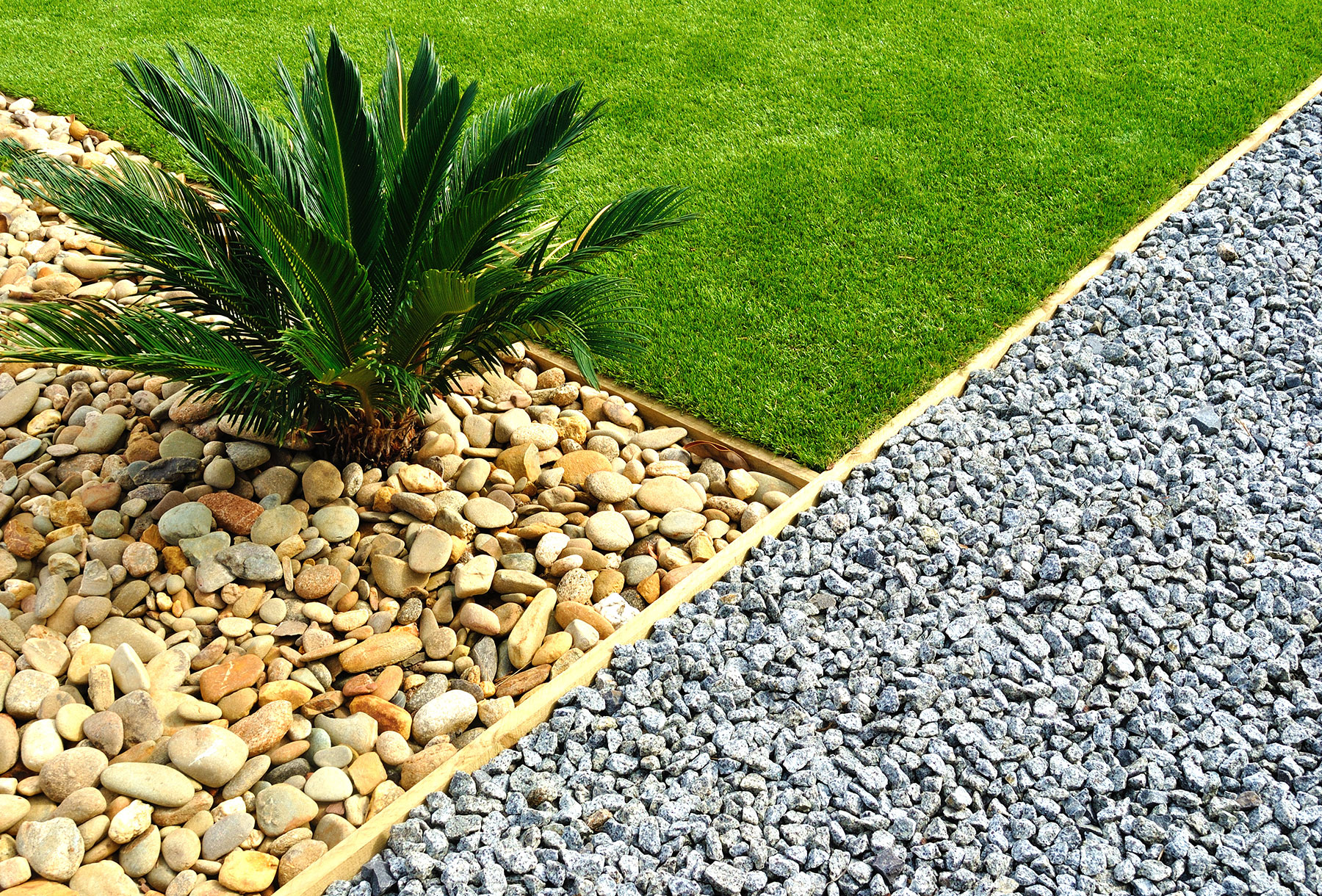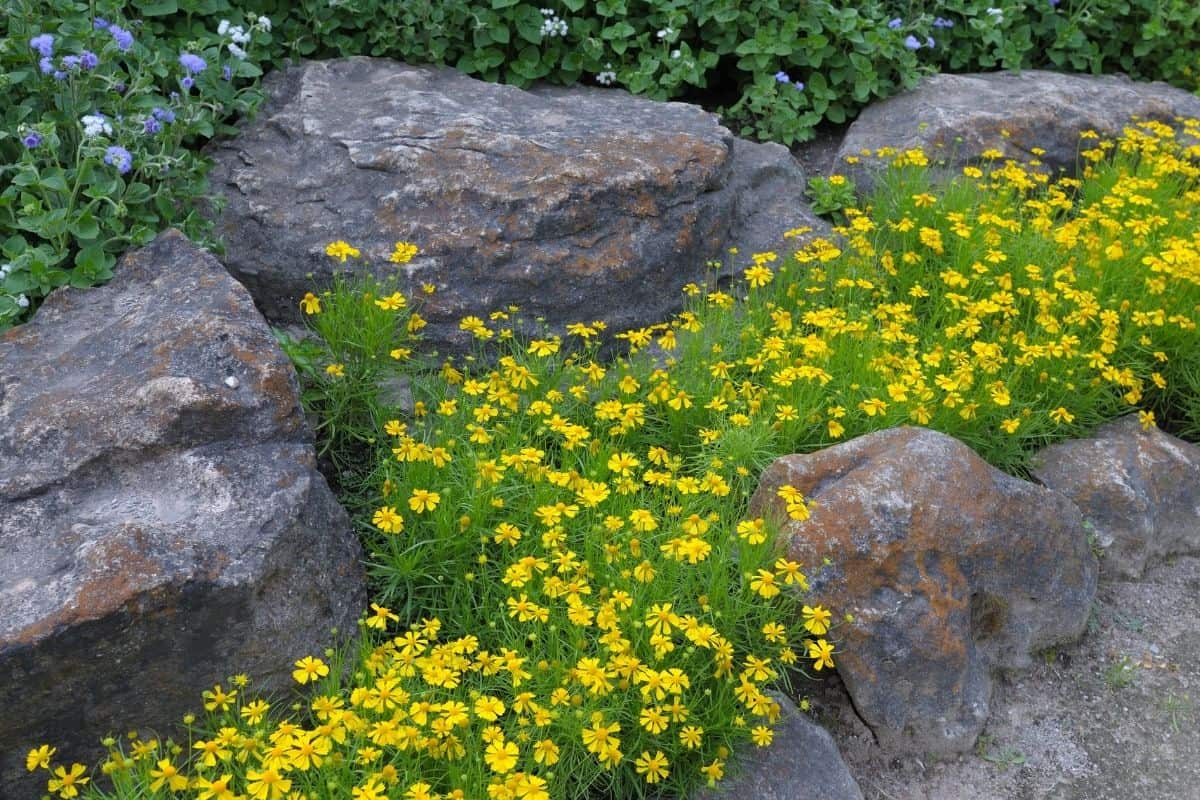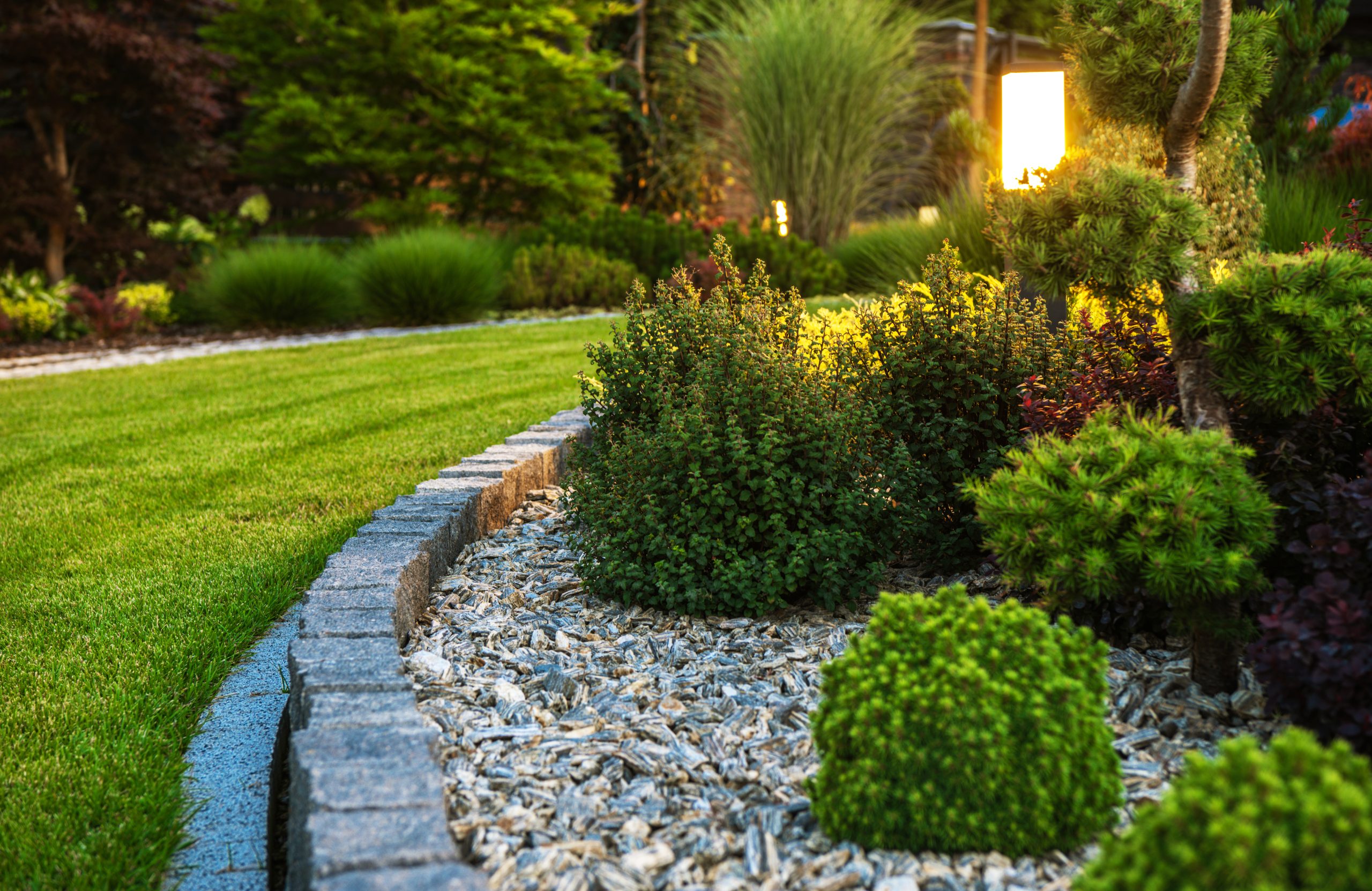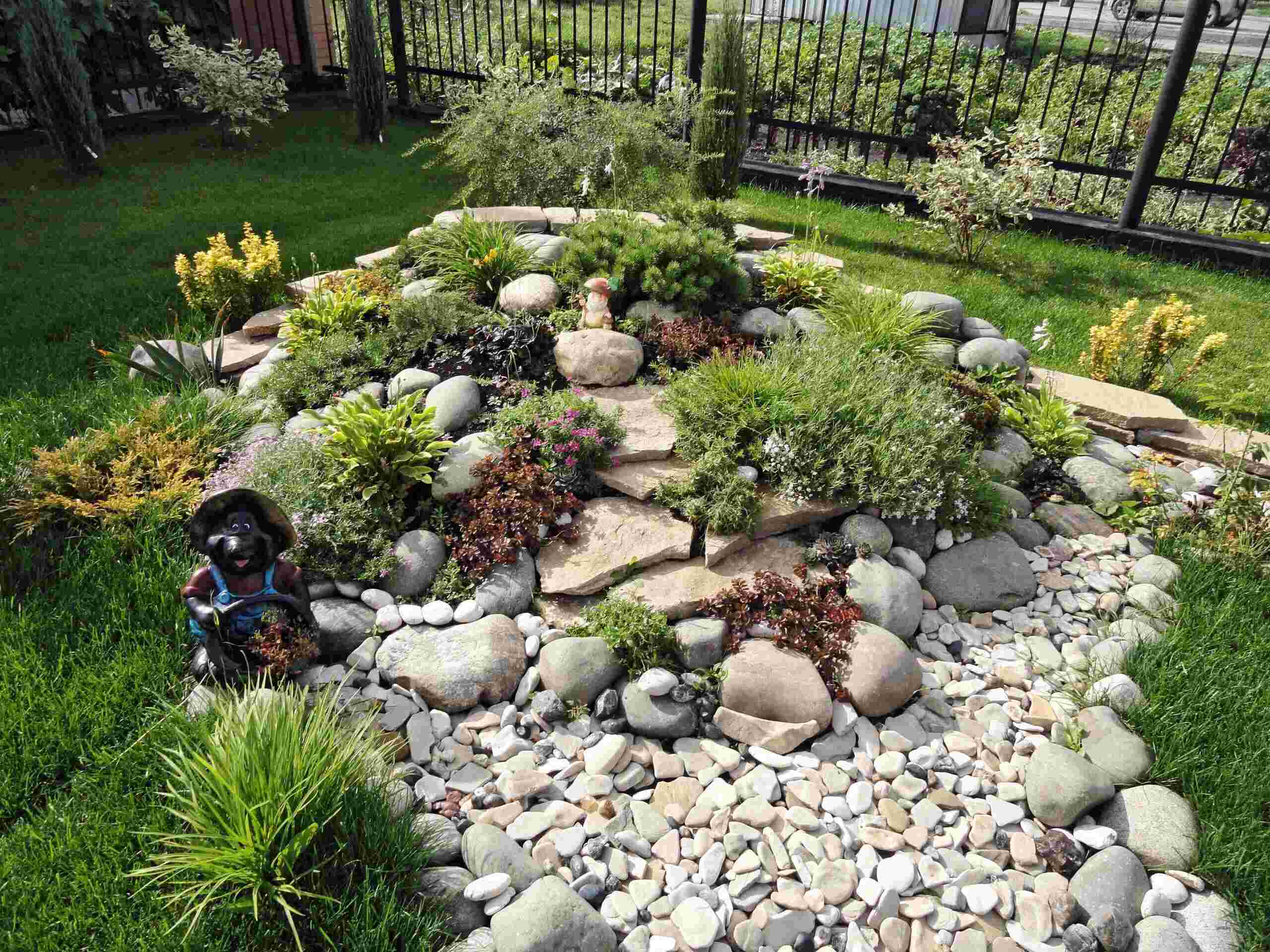Home>Garden Design>Landscape Design>What Color Rock For Landscaping


Landscape Design
What Color Rock For Landscaping
Modified: January 22, 2024
Enhance your landscape design with the perfect color rock. Discover the best options for landscaping and create a stunning outdoor space.
(Many of the links in this article redirect to a specific reviewed product. Your purchase of these products through affiliate links helps to generate commission for Chicagolandgardening.com, at no extra cost. Learn more)
Table of Contents
- Introduction
- Factors to Consider when Choosing Colorful Rocks for Landscaping
- Rock Color Options
- Matching Rocks with Existing Landscaping Elements
- Creating an Impact with Contrasting Colors
- Considering the Surrounding Environment
- Cultural and Symbolic Significance of Colors
- Using Color to Convey Emotions and Create Mood
- Maintenance and Durability of Different Rock Colors
- Conclusion
Introduction
Welcome to the world of landscaping design, where creativity meets nature. One of the most important elements in creating a visually stunning outdoor space is choosing the right colors. While there are many aspects to consider when designing a landscape, selecting the appropriate color of rocks can significantly enhance the overall aesthetic appeal.
Colorful rocks can add depth, texture, and visual interest to any outdoor area. They can be used to create focal points, define borders, or simply provide a natural backdrop for your plants and flowers. However, choosing the right color of rocks for your landscape can be a daunting task. With so many options available, it’s essential to carefully consider several factors to achieve the desired effect.
In this article, we will explore the various factors to consider when selecting colorful rocks for landscaping. From the different rock color options available to the cultural and symbolic significance of colors, we will provide you with valuable insights to help you make an informed decision. Additionally, we will delve into how rock colors can convey emotions, create a specific mood, and even influence the surrounding environment.
Whether you’re aiming for a vibrant and lively outdoor space or a serene and tranquil oasis, the color of your rocks can play a significant role in achieving your desired outcome. So let’s dive into the world of colors and discover how they can transform your landscaping design.
Factors to Consider when Choosing Colorful Rocks for Landscaping
When it comes to choosing colorful rocks for your landscaping, there are several key factors that you should consider. These factors will not only help you create a cohesive and visually appealing outdoor space but also ensure that the rocks blend harmoniously with the existing elements in your landscape. Let’s explore these factors in more detail:
- Rock Color Options: Rocks come in a wide variety of colors, ranging from earthy tones like beige, brown, and gray to more vibrant shades like red, blue, and green. Consider the overall color scheme of your landscape and choose rocks that complement or contrast with the existing elements. For example, if you have plants with purple flowers, consider using rocks with hints of purple to create a cohesive look.
- Matching Rocks with Existing Landscaping Elements: Take into account the color of your plants, flowers, and other landscaping features when selecting rocks. Aim for a harmonious blend between the rocks and the existing elements. If you have a lot of cool-toned plants, such as blue or purple flowers, consider using rocks with cool undertones like gray or blue to create a unified look.
- Creating an Impact with Contrasting Colors: On the other hand, you can also create a striking visual impact by using rocks with contrasting colors. For instance, pairing red rocks with green plants can create a vibrant and eye-catching contrast. When using contrasting colors, be mindful of the overall balance and avoid overwhelming the space.
- Considering the Surrounding Environment: The natural surroundings and the environmental elements in your area should also be taken into consideration. If you live in an arid region with reddish-brown soil, using rocks with warm earth tones can help the landscape blend seamlessly with the surroundings. Similarly, if you have a coastal property, consider using rocks with colors that mimic the shades of the ocean or beach.
- Cultural and Symbolic Significance of Colors: Colors can carry cultural and symbolic meanings, which can be incorporated into your landscaping design. For example, white rocks symbolize purity and innocence, while green rocks represent growth and rejuvenation. Consider the meanings associated with different colors and select rocks that resonate with the message or theme you want to convey.
- Using Color to Convey Emotions and Create Mood: Colors have the power to evoke emotions and create a specific mood in any space. Warm colors like red and orange can create a sense of energy and excitement, while cool colors like blue and green can induce a feeling of calmness and relaxation. Think about the atmosphere you want to create in your outdoor area and choose rocks that align with that mood.
- Maintenance and Durability of Different Rock Colors: Lastly, consider the maintenance and durability of different rock colors. Light-colored rocks may require more frequent cleaning to maintain their pristine appearance, while darker-colored rocks may be more forgiving in terms of showing dirt. Additionally, some rock colors may fade over time when exposed to sunlight or harsh weather conditions. Take these factors into account to ensure the longevity and ease of maintenance of your landscaping design.
By considering these factors when choosing colorful rocks for your landscaping, you can create a visually stunning outdoor space that reflects your personal style and enhances the overall appeal of your property.
Rock Color Options
When it comes to selecting rocks for your landscaping design, you have a wide range of color options to choose from. The color of the rocks you choose can have a significant impact on the overall aesthetic and visual appeal of your outdoor space. Here are some popular rock color options to consider:
- Earthy Tones: Earthy tones such as beige, brown, and gray are versatile and widely used in landscaping designs. These colors provide a natural and organic look, blending seamlessly with the surrounding environment. Earthy-toned rocks are ideal for creating a rustic, earthy, or desert-inspired landscape.
- Natural Neutrals: Neutrals like white, cream, and pale gray can bring a clean and fresh look to your landscaping design. They provide a crisp backdrop for plants and other outdoor elements, making them ideal for modern and minimalist landscapes.
- Bold and Vibrant Colors: If you want to make a bold statement, consider using rocks in vibrant colors such as red, blue, green, or even purple. These colors can add drama, depth, and a pop of color to your outdoor space. However, be cautious when using bold colors, as they can overpower the landscape if not balanced properly.
- Muted and Pastel Hues: For a more subtle and calming effect, opt for rocks in muted or pastel hues. Colors like soft pink, light blue, and pale yellow can create a serene and soothing atmosphere. These colors work well in gardens and outdoor spaces meant for relaxation and tranquility.
- Mixed or Multicolored: Another option is to choose rocks that have a mix of colors or several layers of hues. These rocks offer a unique and eye-catching look, as they can provide a seamless blend of different colors and patterns. They are perfect for adding visual interest and creating a focal point in your landscape.
When considering rock colors for your landscaping, it’s important to keep in mind the surrounding elements, such as plants, flowers, and hardscaping features. Choose rock colors that either complement or contrast with these elements to create a visually balanced and cohesive design.
Remember, the color of the rocks you select will set the tone and atmosphere for your outdoor space. Whether you prefer a natural, subdued look or a vibrant, colorful oasis, there is a rock color option to suit your personal style and landscaping vision.
Matching Rocks with Existing Landscaping Elements
When selecting rocks for your landscaping, it’s important to consider how they will harmonize with the existing elements in your outdoor space. By coordinating the colors of your rocks with your plants, flowers, and other landscaping features, you can create a visually pleasing and cohesive design. Here are some tips for matching rocks with your existing landscaping elements:
- Consider the Color Scheme: Take a look at the overall color scheme of your outdoor area. Identify the dominant colors and shades present, including those in your plants, flowers, and hardscaping features. Choose rocks that complement or blend well with these colors. For example, if your plants have warm tones such as red or orange, consider using rocks with similar warm hues to create a cohesive and visually appealing design.
- Pay Attention to Texture: In addition to color, consider the texture of your existing landscaping elements. Some plants and flowers have delicate or soft textures, while others have more coarse or rough textures. Pairing rocks with complementary textures can create an interesting visual contrast. For instance, pairing smooth rocks with delicate, feathery plants can create a pleasing juxtaposition.
- Balance Light and Dark: Create balance by considering the light and dark elements in your landscape. If you have a lot of light-colored plants or flowers, you may want to use darker rocks to provide contrast and make them stand out. Conversely, if your landscape is dominated by darker foliage, lighter-colored rocks can add brightness and balance to the overall design.
- Think About Long-Term Growth: Keep in mind that your plants and landscape will grow and change over time. Consider the eventual size and color of your plants when choosing rocks. For example, if you have small plants that will eventually grow larger and have vibrant flowers, select rocks that will complement the future color palette of your garden.
- Match the Style: Consider the overall style and theme of your landscape design. If you have a formal garden, rocks with clean lines and a polished appearance may be more fitting. For a more natural or rustic landscape, choose rocks with a rougher texture and an earthy color palette. Matching the style of your rocks with the existing elements will create a cohesive and visually pleasing outdoor space.
Remember, the goal is to create a harmonious and visually balanced landscape. By carefully considering the colors and textures of your rocks and how they interact with your plants and other landscaping features, you can achieve a cohesive and visually stunning outdoor space.
Creating an Impact with Contrasting Colors
Using contrasting colors is a powerful technique in landscaping design that can create a bold and visually striking impact. When applied correctly, contrasting colors can add depth and dimension to your outdoor space, making it truly stand out. Here are some tips for creating an impact with contrasting colors in your rock choices:
- Opposites on the Color Wheel: Look for colors that are opposite each other on the color wheel to create maximum contrast. For example, pairing rocks in shades of red with plants that have green leaves can create a vibrant and eye-catching contrast. Yellow and purple, orange and blue, and pink and green are other combinations that can create a vibrant impact.
- Light vs. Dark: Contrast can also be achieved by pairing light-colored rocks with dark-colored plants or vice versa. This contrast in brightness can draw attention and create a visually interesting composition. For example, using pale gray rocks alongside deep purple plants can create a captivating contrast that adds drama to your landscape.
- Warm vs. Cool: Contrast between warm and cool colors can also create a visually pleasing impact. Warm colors like red, orange, and yellow appear more active and energetic, while cool colors like blue, green, and purple have a calming effect. Pairing warm-colored rocks with cool-toned plants can create an exciting visual contrast and add dynamic energy to your landscape design.
- Consider Balance: While contrasting colors can create a powerful impact, it’s essential to maintain balance in your design. Avoid overwhelming your landscape by using contrasting colors sparingly and strategically. Incorporate complementary or neutral colors to unify the design and create a cohesive look.
- Use as Focal Points: Utilize contrasting colors to create focal points in your outdoor space. For example, placing a cluster of brightly colored rocks amidst a sea of neutral-toned rocks can draw the eye and serve as a visual centerpiece. This technique can bring attention to specific areas or elements in your landscape design.
Remember to consider the overall design and style of your landscape when using contrasting colors. They should complement the existing elements and contribute to the overall aesthetic appeal of your outdoor space. With proper consideration and artistic implementation, contrasting colors can elevate the visual impact of your landscaping, leaving a lasting impression on anyone who sees it.
Considering the Surrounding Environment
When choosing the color of rocks for your landscaping, it’s essential to consider the natural surroundings and the environmental elements of your outdoor space. By taking these factors into account, you can create a landscape design that seamlessly blends with the surrounding environment. Here are some considerations when selecting rocks based on the surrounding environment:
- Regional Climate: Take into account the climate of your region when choosing rock colors. If you live in an arid or desert-like climate, earth-toned rocks such as beige, brown, and terracotta can mimic the natural hues of the surroundings. In contrast, if you reside in a coastal area, rocks in shades of gray or blue can complement the oceanic landscape.
- Local Geography: Consider the geographical features of your area when selecting rock colors. If you have rocky terrain or mountainous surroundings, rocks in earthy tones and natural hues can create a seamless transition between your landscape and the local geography. On the other hand, if your environment is characterized by lush greenery, opt for rocks with shades of green or earthy greens.
- Soil Composition: The color of your soil can also impact your choice of rock colors. If your soil has a reddish or clay-like hue, using rocks in warm shades like red, orange, or brown can complement the soil tones. Conversely, if your soil is lighter in color or sandy, rocks in neutral or pastel hues can create a harmonious blend.
- Native Plants and Wildlife: Choosing rock colors that complement the native plants and wildlife in your area can create a more authentic and natural-looking landscape. By incorporating colors that mimic the natural habitat, you can attract local wildlife and help your landscape blend seamlessly into the environment. Research the native flora and fauna of your region for inspiration.
- Architectural Style: Consider the architectural style of your property and its surroundings when choosing rock colors. The color of rocks can harmonize with the materials used in your home’s construction or other architectural structures nearby. For example, if you have a brick or stone exterior, earth-toned rocks can complement the aesthetic and create a cohesive design.
By selecting rock colors that consider the surrounding environment, you can create a landscape that feels integrated and harmonious with its natural surroundings. This creates a cohesive and visually pleasing outdoor space that seamlessly blends into the local ecosystem.
Cultural and Symbolic Significance of Colors
Colors have cultural and symbolic meanings that can add depth and significance to your landscaping design. By incorporating colors with specific symbolism, you can create a landscape that communicates a message or reflects your personal beliefs. Here are some examples of the cultural and symbolic significance of colors:
- Red: Red is often associated with passion, energy, and power. It can symbolize courage, love, and strength. In some cultures, red is also believed to bring good luck and ward off evil spirits. Incorporating red rocks into your landscape design can add a vibrant and bold statement to your outdoor space.
- Yellow: Yellow is often associated with happiness, optimism, and sunshine. It can symbolize joy, enlightenment, and warmth. Yellow rocks can bring a sense of brightness and cheerfulness to your landscape, creating a lively and welcoming atmosphere.
- Green: Green is commonly associated with nature, growth, and harmony. It represents fertility, renewal, and balance. Incorporating green rocks into your design can create a sense of tranquility and a connection to the natural world.
- Blue: Blue is often associated with calmness, serenity, and peace. It symbolizes tranquility, trust, and stability. Using blue rocks in your landscape design can create a soothing and relaxing ambiance, perfect for creating a peaceful outdoor retreat.
- Purple: Purple is often associated with royalty, luxury, and spirituality. It symbolizes creativity, wisdom, and the mysteries of the universe. Incorporating purple rocks into your design can add a touch of elegance and mystique to your outdoor space.
- White: White is often associated with purity, innocence, and cleanliness. It represents clarity, new beginnings, and a sense of calmness. White rocks can create a clean and fresh look in your landscape and provide a beautiful contrast against colorful plants and foliage.
- Black: Black is often associated with mystery, sophistication, and power. It can symbolize strength, protection, and elegance. Incorporating black rocks into your design can add a dramatic and contemporary touch, creating a visually striking contrast against lighter elements.
It’s important to consider the cultural significance and personal meaning behind colors when selecting rocks for your landscaping. Choose colors that resonate with you and align with the message or theme you want to convey through your outdoor space.
While these cultural and symbolic associations exist, it’s also important to be respectful and sensitive to the cultural traditions and beliefs of others. Make sure to research the meanings and symbolism of colors in different cultures before incorporating them into your landscaping design.
Using Color to Convey Emotions and Create Mood
Color has the power to evoke emotions and create a specific mood in any space, including your landscaping design. By strategically using color in your choice of rocks, you can create a desired atmosphere and set the tone for your outdoor space. Here are some ways in which you can use color to convey emotions and create a mood in your landscaping:
- Warm Colors: Warm colors such as red, orange, and yellow are known for their energetic and vibrant qualities. They can create a sense of excitement, enthusiasm, and passion in your landscape. If you want to create a lively and energetic atmosphere, incorporating rocks in warm hues can do the trick.
- Cool Colors: Cool colors such as blue, green, and purple have a calming and soothing effect. They can create a sense of tranquility, relaxation, and serenity in your landscape. Using rocks in cool tones can help create a peaceful and refreshing outdoor retreat where you can unwind and find inner peace.
- Neutrals and Earth Tones: Neutral colors like beige, brown, and gray, as well as earth tones, can create a sense of grounding and stability in your landscape. These colors provide a natural and timeless look and can evoke a feeling of connection to the earth. They are particularly suitable for creating a rustic or organic atmosphere.
- Contrasting Colors: The use of contrasting colors can create a dynamic and visually stimulating landscape. Pairing complementary colors such as red and green or orange and blue can create a sense of balance and harmony while still maintaining a vibrant and eye-catching appeal. This can create a vibrant and lively mood in your outdoor space.
- Monochromatic Palettes: Creating a monochromatic color scheme in your landscape can create a sense of harmony and sophistication. Selecting various shades and tones of a single color, such as different hues of blue or varying shades of green, can create a cohesive and visually pleasing environment that exudes a specific mood.
- Consider Cultural Associations: Different cultures may have specific cultural associations with colors. For example, in some cultures, white may represent purity and innocence, while in others it may symbolize mourning. Be mindful of the cultural contexts and associations of colors when considering the emotions and mood you want to convey in your landscape.
By understanding the emotional impact of different colors and using them intentionally in your landscaping design, you can create a space that evokes the desired emotions and inspires the intended mood. Whether you want to create a vibrant and energetic atmosphere or a calm and serene oasis, the colors you choose can play a significant role in setting the tone of your outdoor space.
Maintenance and Durability of Different Rock Colors
When selecting rocks for your landscaping, it’s important to consider the maintenance and durability of different rock colors. The color of the rocks you choose can affect their appearance over time and the level of care they require to keep them looking their best. Here are some factors to consider:
- Cleaning and Staining: Light-colored rocks, such as white or beige, may require more frequent cleaning and maintenance to keep them looking pristine. They are more prone to showing dirt, stains, and discoloration. On the other hand, darker-colored rocks, like black or dark gray, are less likely to show signs of wear and staining.
- Fading and Sun Exposure: Some rock colors may fade over time when exposed to sunlight and other environmental elements. Vibrant colors, such as red or blue, are particularly prone to fading. If your outdoor space receives a lot of direct sunlight, it may be wise to choose rock colors that are less likely to fade, like earth tones or neutral shades.
- Durability: Different rock types have varying levels of durability. Some rocks are more resistant to weathering, erosion, and other forms of wear and tear. Before selecting a specific color of rock, consider its durability and how well it will hold up over time. Consult with your landscaping professional to choose a rock color that is both aesthetically pleasing and long-lasting.
- Climate Considerations: The climate of your area can also impact the maintenance and durability of different rock colors. Extreme temperature fluctuations and harsh weather conditions can affect the appearance of rocks. For example, in areas with freezing winters, rocks that absorb moisture can crack and deteriorate. Choose rock colors that can withstand the climate conditions in your region.
- Color and Heat Absorption: Keep in mind that rocks with darker colors tend to absorb more heat from the sun. In hot climates, using dark-colored rocks can lead to increased heat in your outdoor space, which may not be desirable if you want to create a cool and comfortable environment. Consider the color-heat absorption relationship when selecting rocks for your landscaping.
By considering the maintenance requirements and durability of different rock colors, you can make an informed decision that fits your lifestyle and the level of maintenance you are willing to undertake. Remember to consult with a professional landscaper or supplier to understand the specific maintenance needs of the rock colors you are considering.
Conclusion
Choosing the right color of rocks for your landscaping is a crucial step in creating a visually stunning outdoor space. By considering various factors such as rock color options, matching rocks with existing landscaping elements, creating an impact with contrasting colors, considering the surrounding environment, understanding cultural and symbolic significance, using color to convey emotions and create mood, and considering maintenance and durability, you can make an informed decision that results in a cohesive and visually pleasing design.
Rock color options are vast, ranging from earthy tones to vibrant hues, allowing you to find the perfect complement to your existing landscaping elements. By matching rocks with your plants, flowers, and other features, you can create a harmonious and visually balanced design that naturally blends with the surroundings.
Creating an impact with contrasting colors can add depth and visual interest to your landscape, while considering the surrounding environment ensures that your design seamlessly integrates with the natural surroundings and geography. Taking into account the cultural and symbolic significance of colors can add a deeper layer of meaning to your landscaping, while using color to convey emotions and create a particular mood sets the desired atmosphere in your outdoor space.
Lastly, considering the maintenance and durability of different rock colors is crucial in ensuring the longevity and ease of maintenance of your landscaping design. By taking these factors into consideration, you can design a landscape that is not only visually appealing but also practical and sustainable in the long run.
So, let your imagination guide you as you explore the world of rock colors for landscaping. With careful consideration of these factors, your outdoor space can become a reflection of your personal style, while creating a beautiful and inviting atmosphere for you to enjoy for years to come.










